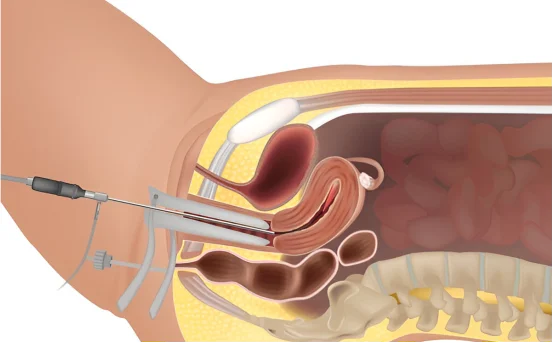Splenectomy may sound alarming, but it is a well established and generally safe operation when performed under proper medical supervision. Advances in surgical techniques particularly laparoscopic or minimally invasive approaches have made the procedure safer, with quicker recovery times and fewer complications. Patients undergo splenectomy for a range of reasons, including traumatic injury, blood disorders, cancers, and infections. While life without a spleen does require some lifestyle adjustments, especially in terms of infection prevention, many people go on to live completely normal and healthy lives after the surgery.
The spleen, though often overlooked, plays a crucial role in our immune system and blood filtration. When conditions arise that impair its function or pose serious health risks, a surgical procedure called splenectomy the removal of the spleen may be recommended.
What Is Splenectomy?
A splenectomy is a surgical procedure in which the spleen is removed either partially or entirely. The spleen is located in the upper left side of your abdomen, just beneath your rib cage. It helps filter blood, stores white blood cells and platelets, and helps fight certain kinds of bacteria.
Although the spleen is a helpful organ, it is not essential for survival. Other parts of the body, such as the liver and lymph nodes, can take over many of its functions after removal.
Why Is a Splenectomy Performed?
A splenectomy is typically recommended when the spleen is damaged or diseased. Common medical reasons for spleen removal include :-
-
Trauma or Injury :- The spleen can be ruptured due to a car accident, sports injury, or a heavy fall. A ruptured spleen is a medical emergency and often requires immediate surgery.
-
Blood Disorders :- Conditions like hereditary spherocytosis, sickle cell disease, or thalassemia may necessitate splenectomy when the spleen is overactive in destroying red blood cells.
-
Cancer :- Certain blood cancers such as lymphoma, leukemia, or Hodgkin’s disease may involve the spleen and require removal.
-
Enlarged Spleen (Splenomegaly) :- If the spleen becomes enlarged and starts causing symptoms or complications, surgery may be needed.
-
Infections or Cysts :- Rare but serious infections or cysts that don’t respond to treatment might also lead to the recommendation for spleen removal.
Types of Splenectomy Procedures
There are two main types of splenectomy procedures based on how the surgery is performed :-
- Laparoscopic Splenectomy :- This is a minimally invasive method where the surgeon makes a few small incisions and uses a camera and special tools to remove the spleen. This technique is preferred when possible due to quicker recovery, less pain, and reduced risk of infection.
- Open Splenectomy :- In some cases, such as when the spleen is greatly enlarged or there is internal bleeding, an open splenectomy is necessary. This involves a larger incision in the abdomen to access and remove the spleen. Though more invasive, it allows better access for complex situations.
Preparing for a Splenectomy
Prior to the surgery, your healthcare provider will guide you through several steps to prepare :-
-
Vaccinations :- Since the spleen plays a key role in fighting bacteria, patients are vaccinated against infections like pneumococcus, meningococcus, and Haemophilus influenzae type B (Hib) before the procedure.
-
Blood Tests and Imaging :- Blood work and imaging tests like CT scans or ultrasounds help determine spleen size and guide surgical planning.
-
Discussion of Medications :- You may need to stop certain medications, especially blood thinners, in the days leading up to surgery.
The Splenectomy Procedure: What to Expect?
Splenectomy is typically performed under general anesthesia and may last 1 to 3 hours, depending on the type and complexity of the case. In laparoscopic procedures, small instruments are used through multiple tiny incisions. The spleen is then detached from surrounding tissues and removed through one of the incisions.
In an open splenectomy, a longer incision allows direct access to the spleen. The organ is carefully detached and removed, followed by closing the incision with stitches or staples.
Post-operative monitoring in the recovery room ensures that vital signs are stable, and patients are closely observed for bleeding or infection.
Recovery After Splenectomy
Recovery time varies depending on the type of surgery performed. Laparoscopic splenectomy patients can usually return home in 2–3 days and resume normal activities in about 2 weeks. Open splenectomy may require a hospital stay of up to a week and several weeks of recovery at home.
Key post-surgery care tips include :-
-
Follow the prescribed course of antibiotics to prevent infections.
-
Avoid heavy lifting or strenuous activity for several weeks.
-
Watch for signs of complications such as fever, pain, or unusual swelling.
-
Attend follow-up appointments and get any recommended vaccinations.
Life After Splenectomy: Long Term Considerations
While many people live healthy lives without a spleen, certain precautions are necessary due to increased susceptibility to infections :-
-
Lifelong Infection Risk :- Without a spleen, the body becomes more vulnerable to bacterial infections, especially from encapsulated organisms like Streptococcus pneumoniae. Hence, vaccinations and prophylactic antibiotics become crucial.
-
Medical Alert :- It is advised to wear a medical alert bracelet indicating that you have had a splenectomy, in case of emergency situations.
-
Prompt Medical Attention :- Even minor fevers should not be ignored post-splenectomy. Immediate medical evaluation is important, as infections can progress rapidly.
Risks and Complications of Splenectomy
Like any surgical procedure, splenectomy carries certain risks, which include :-
-
Bleeding or Hemorrhage
-
Infection at the incision site
-
Blood clots
-
Injury to surrounding organs
-
Increased risk of severe infections (post-splenectomy sepsis)
However, these risks are minimized with careful preoperative preparation and post-operative monitoring.
Benefits of Splenectomy
Despite the risks, splenectomy offers many potential benefits, especially for patients with chronic blood disorders or recurrent spleen related complications :-
-
Relief from anemia, fatigue, and other blood disorder symptoms.
-
Reduced risk of spontaneous rupture or bleeding from an enlarged spleen.
-
Better management of autoimmune or hematologic conditions.
For cancer patients, splenectomy can also improve diagnostic clarity and help manage disease spread.
Conclusion
A splenectomy is a significant yet often life saving procedure that can greatly improve quality of life for individuals with specific medical conditions. With advances in minimally invasive surgery, many patients experience quicker recovery and fewer complications. However, because the spleen plays an important role in immune defense, understanding the post-surgery lifestyle and preventive care is essential.























